In these straitened times, you may be looking around for ways of reducing your car maintenance costs. There are lots of tasks that you could take on yourself, such as changing your car’s engine oil. Though it may seem daunting, a bit too technical, it’s actually one of the easiest DIY maintenance jobs there are. But how to change engine oil?
In this guide, we’re going to take you through every step of the process, from how to work out if an oil change is needed to disposing of the used oil. We’ll also itemise all the equipment you’ll need to help you complete the task as quickly – and cleanly – as possible.

When should I change my car’s engine oil?
Every car’s engine needs its oil changing periodically. The frequency of those changes varies between engines and is set out in the manufacturer’s servicing schedule. It could be every 20,000 miles, or every 5,000 miles, or any other number.
Even mechanical experts can’t really agree. Some recommend changing engine oil every six months, or every 12 months. Or every 10,000 miles. Certainly, it’s wise to wait no more than 20,000 miles between oil changes; you can change it as frequently as you want up to that limit.
But inspecting the condition of the engine oil when you give your car a regular health check can also indicate that a change is needed. Fresh engine oil has a light, golden colour; over time it becomes black with soot and contaminants, and at that point it needs changing.
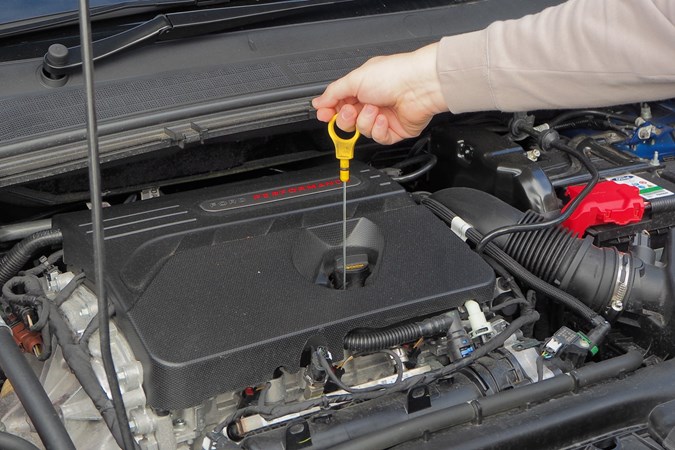
Can I just add oil to my car?
All car engines lose oil over time and you should periodically check the oil level to see if more needs adding. However, the oil will eventually need changing when it becomes black with soot and contaminants.
How much oil does my car’s engine need?
The amount of oil an engine needs varies from car to car. As rule of thumb, the bigger the engine, the more oil it needs. A 1.0-litre engine may only need a couple of litres, a 5.0-litre engine may need several gallons. Whatever the case, the car’s manual will say what its oil capacity is.
What happens if I don’t change my car’s engine oil?
Oil lubricates an engine. Over time, it picks up soot and contaminants from the engine that gradually make it less viscous, or stickier. That means it can’t lubricate the engine as well, causing damage.
Left long enough, oil eventually turns to sludge or even a kind of jelly. At that point, the engine will be so badly damaged through lack of lubrication that your car will probably need a new one.
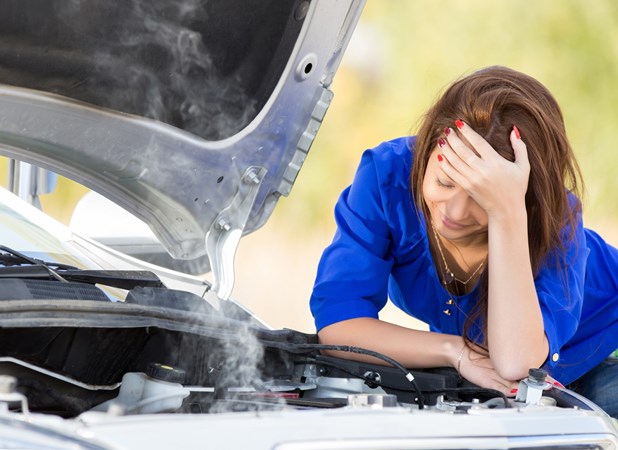
Is it worth changing your own oil?
It certainly can be. When you take your car to a garage for an oil change, you’ll pay for at least an hour of labour and the garage may apply a profit margin to the cost of the fluids and parts. Then there’s VAT to pay on top. By contrast, it’s possible to do the job at home for a fraction of the cost.
What tools do I need to change my car’s engine oil?
Below, we’ve listed all the tools and equipment you’ll need at the bare minimum. The cost of buying any you don’t already have can add up but, if you look after your tools, you should only need to buy them once. And, as you’re saving money by not paying a garage to do oil changes, the tools will eventually pay for themselves.
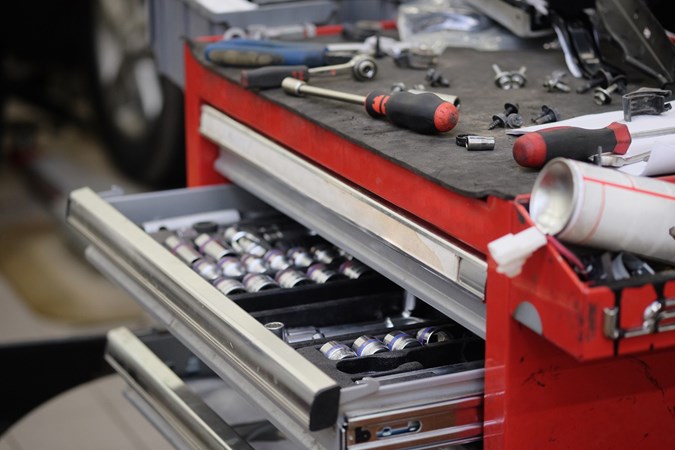
- You need some means of the lifting the car off the ground, so you can get under it. A couple of jacks will do, but they’re not especially secure. We recommend jacking the car up then putting it on axle stands or driving it up onto a pair of ramps.
- A socket set and screwdriver with interchangeable heads to undo the many fasteners you’ll come across. The job is made much easier with an electric wrench or electric screwdriver.
The best electric screwdriver
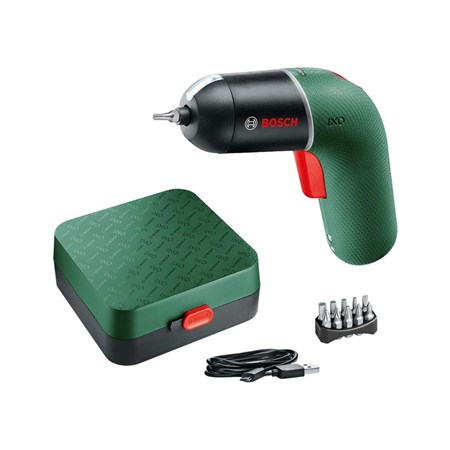

Pros
- Perfect for DIYers
- Ergonomic design
Cons
- Only 10 screwdriver attachments
- A magnetic parts tray to collect all the fasteners you remove.
- An oil pan to collect the old oil as it comes out of the engine.
- A headtorch or floodlight so you can see what you’re doing.
- Changing oil can be a messy job; wearing a pair of safety glasses and garage gloves helps keep you clean and protected. You may want to keep some rags to hand to clean up any splodges.
- Engine flush and appropriate oil for your car’s engine. 5w30 oil is a good all-purpose oil but there are many types that suit different sorts of engine.
- The correct oil filter and sump plug and gasket for your car – you can buy these from online parts suppliers and shops.
There are other pieces of equipment that are nice to have for the job but not absolutely necessary, such a mechanic’s dolly for sliding under your car. You may also want to get some driveway cleaner, in case you spill any oil.
10 steps to changing car engine oil
Once you’ve gathered all your tools, equipment, parts and fluids, you’re ready to get on and change your car’s engine oil. Here’s every step of the process.
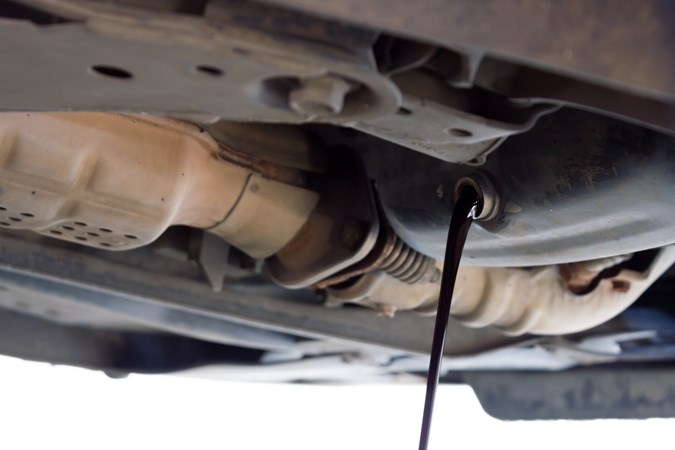
1. Run the engine for a bit
Oil is runnier and therefore drains out of the engine more easily when it’s warm. Run the engine for five minutes or so first to warm it through. Don’t let it get too hot, though, because you could burn yourself while you’re under the car.
2. Raise the car off the ground
Engine oil drains out of the sump underneath the car, so you need to securely raise the car off the ground to access it – just the end of the car where the engine is. The best thing to do is jack it up and put it on axle stands – use two jacks and stands, one on each side of the car. Consult the instructions and/or your car’s manual to find out where to position the stands.
Alternatively, you can drive your car onto a pair of ramps. This can be quite tricky, requiring deft clutch/throttle control and a very quick stomp on the brakes, lest the car go off the end of the ramps. Always have someone outside the car guiding you up. Once stopped, put the handbrake on and chock the wheels that are on the ground.
3. Get under the car
Once the car is raised, you can get under it to drain the oil. First, put some safety glasses and garage gloves on to protect yourself, then scramble under the car. Make sure your tools and oil pan are within easy reach. Set up a lamp or use a headtorch so you can see what you’re doing.

4. Remove the undertray
Most cars have a protective tray under the engine that needs removing to access the sump plug. They’re held with fasteners that you’ll need a torque wrench or screwdriver to undo.
The fasteners are usually around the edge of the tray, but there may be some in the centre. Collect them in a parts tray, or they’ll almost certainly get lost. The undertray is unlikely to be heavy but be prepared for it falling on you when the last fastener is removed.
5. Undo the sump plug
Undoing the sump plug allows the old oil to drain out. It’s usually at the lowest point directly under the engine – if you can’t find it, consult the car’s manual or search online. The plug should have a bolt head in it – use a torque wrench to undo it. But first, make sure you position the oil pan carefully, so no oil reaches the ground.
Then, you can undo the plug – don’t worry about catching it, you can fish it out of the oil later. The oil will pour out immediately, so be careful not to get covered in it.
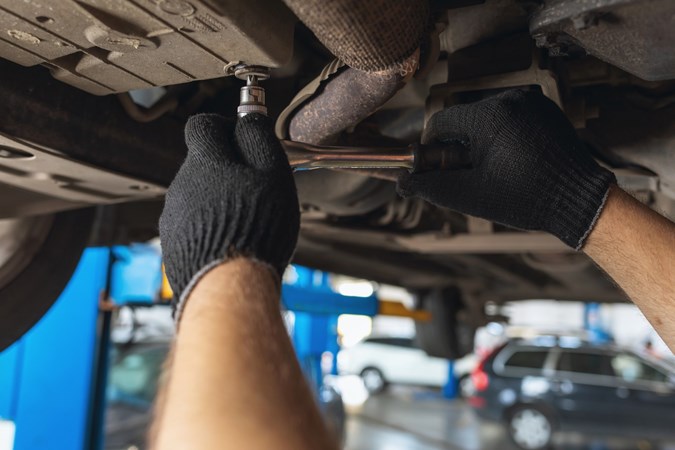
6. Go and get a drink
The oil could take as much as an hour to completely drain out of the engine, so now’s the time to pull yourself out from under the car and have a drink or two. Maybe a slice of cake, as well.
Once it looks like there’s no oil left, you could pour some engine flush into the oil filler and wait for it to drain out. Makers claim flush helps remove gunk and sludge, though its efficacy is debated. Still, it’s a sensible precaution if the oil hasn’t been changed for a long time.
When the flush has drained out, you should change the oil filter. We have a dedicated guide explaining exactly how to do so.
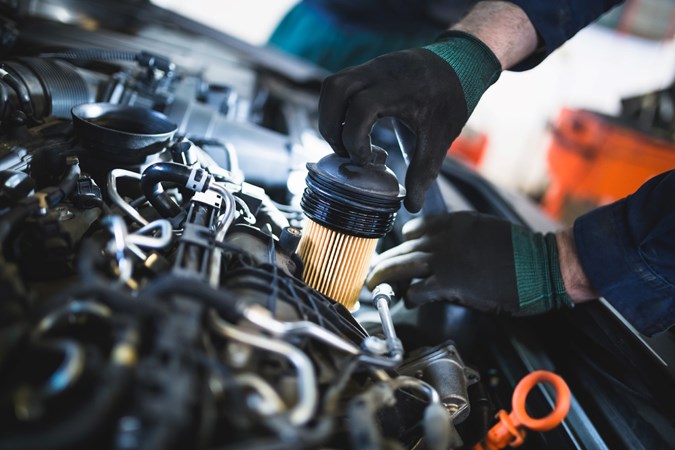
7. Replace the sump plug
When you’re sure the old engine oil has completely drained out, it’s time to start putting everything back together and refill the oil. Start by bolting in the new sump plug, making sure its gasket is in place. Be careful not to overtighten the plug, or you could damage the sump.
8. Add the fresh oil
Now you need to get back out from under the car and pour the fresh oil in through the filler on top of the engine. Only pour a small amount in to begin with and wait about five minutes for it to work its way down into the sump. Then make sure there are no leaks from the plug.
If there aren’t, pour in the rest of the oil. Pour for a few seconds at a time, checking the level on the dipstick between each pour. Don’t go over the maximum level. Again, wait five to ten minutes for the oil to work its way through the whole engine. Then start the engine to make sure everything looks, sounds and smells right.
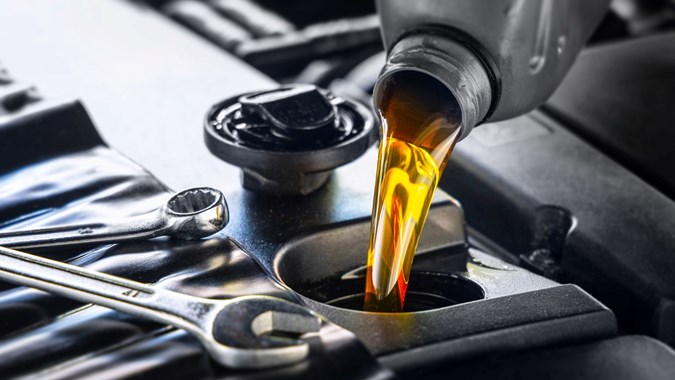
9. Replace the undertray and put the car back on the ground
Replacing the undertray can be a proper faff and will probably need a second pair of hands to hold it in place. It can be tempting to not bother but be aware the engine will be less protected if you don’t.
Next, you can get the car back on the ground. If it’s on axle stands, put the jacks back in place before removing the stands, then gradually lower the car back down. If it’s on ramps, make sure you remove the chocks first then slowly roll the car down.
10. Dispose of the old oil and clean up if needed
You must dispose of old engine at your local council tip – along with the old oil filter and any oily rags. Do not dispose of them in any other way. It’s an environmental hazard and improper disposal can land you with a very hefty fine.
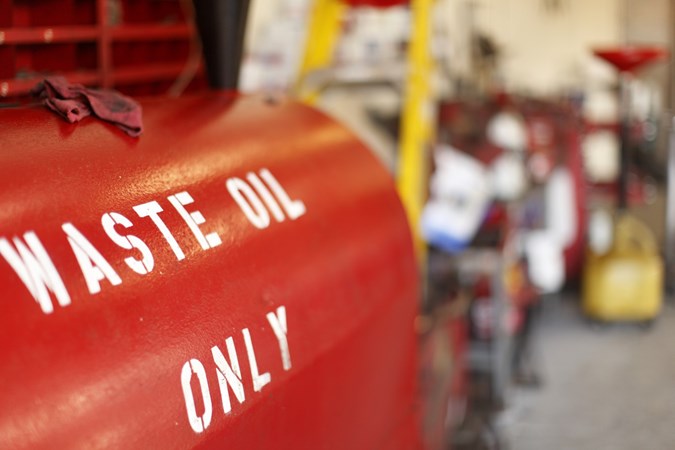
But before disposal, use a magnet to fish out the old sump plug and see if there are any other small pieces of metal in the oil. If there are, it’s an indication that engine components are wearing excessively.
Lastly, if you spilled any oil on the ground, it needs a good scrub with driveway cleaner.
FAQs
-
How much does it cost to change engine oil?
If you're changing your car's oil yourself, expect to pay a total of £35 to £50 for the oil, engine flush and oil filter. The cost is largely determined by the quantity and quality of oil you buy. The tools and equipment needed can cost as little as £100 in all, though you can spend a lot more than that on premium quality products. Most garages charge at least £100 for an oil change.
-
How long does it take to change engine oil?
If you're attempting to change your car's engine oil for the first time, expect the process to take a couple of hours or more. With practice, you may get much quicker at most of the stages, but you still need to wait at least an hour for the old oil to drain out.
Just so you know, we may receive a commission or other compensation from the links on this website - read why you should trust us.






















